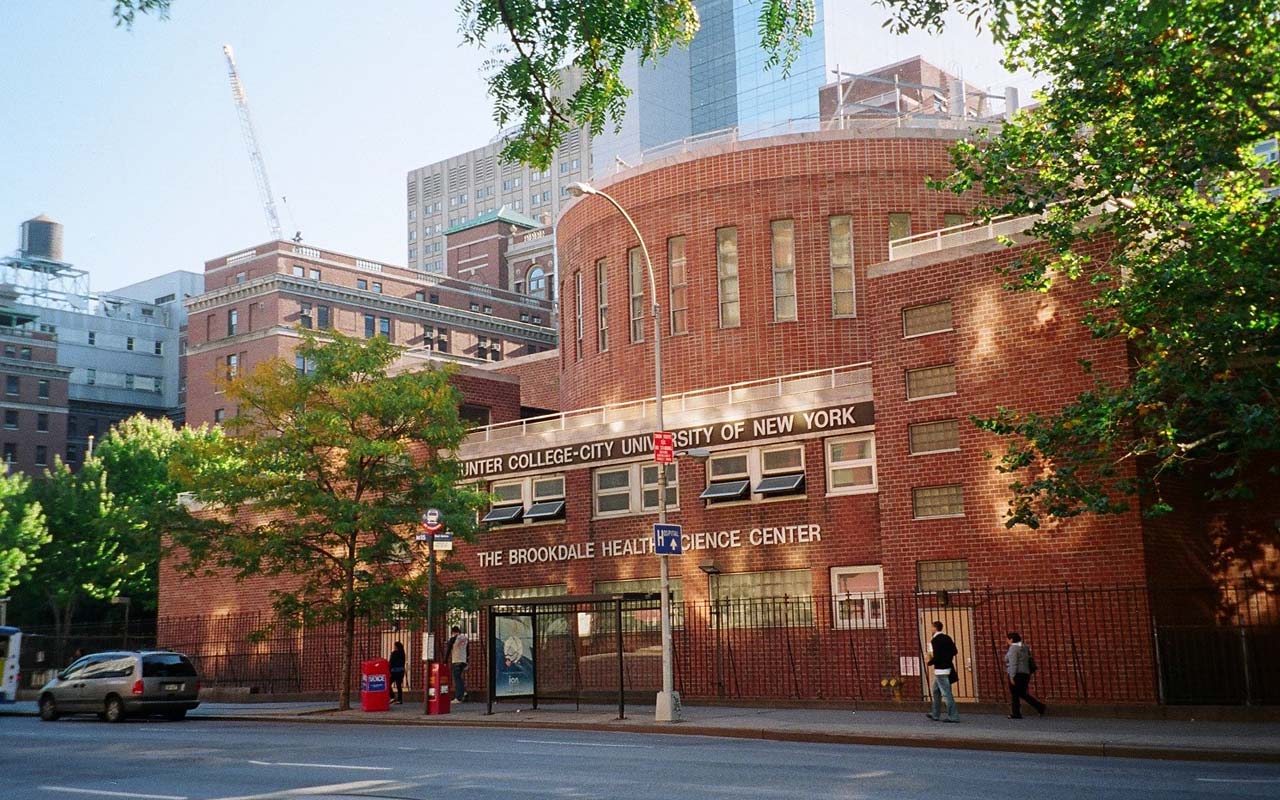10 Best College Values With the Lowest Graduating Debt
The cost of a college education continues to rise – and so does the amount that students are borrowing to cover those costs.


The cost of a college education continues to rise – and so does the amount that students are borrowing to cover those costs. In 2014-15, the average sticker price (including tuition, fees, and room and board) at a four-year private nonprofit college or university rose 3.6%, to $42,419, according to the College Board. The annual published price for out-of-state students at four-year public institutions rose 3.3% to $32,762. Meanwhile, the average published price for for in-state students at a public four-year school rose 3.0% to $18,943. Student borrowing crept up as well. Student borrowers at private colleges and universities racked up an average of $31,200 in debt, while students at four-year public institutions averaged $25,600 per borrower.
There are schools where debt per borrower is unusually low, however. These 10 colleges offer academic quality and enough financial support to get students to graduation day with a manageable amount of student debt. At six of the schools on our list, students who borrow earn their diploma with an average of $13,000 or less in debt. And at three of the schools, student borrowers graduate with an average debt of less than $10,000. Take a look:
Disclaimer
Kiplinger's combined rank includes both public and private colleges.

1. Princeton University
- Average debt at graduation: $5,552
- Kiplinger’s combined rank: #1 (#1 among private universities)
- Undergraduate enrollment: 5,323
- Total annual cost: $59,165
- Students who borrow: 24%
Princeton’s generous financial aid awards help propel this Ivy to the top spot on our combined list, which includes both private and public colleges (we use out-of-state costs for public colleges). It also leads our list of private universities. The school's aid package helps keep student debt in check. Princeton, with a 7% acceptance rate, is one of the most selective schools on our best values list. More than three-quarters of incoming freshmen score 700 or higher on the verbal portion of the SAT, and 80% score 700 or higher on the math portion of the exam. Students at this New Jersey school, located halfway between Philadelphia and New York City, can select from 34 academic departments, and an impressive six-to-one student-faculty ratio means students get plenty of face time with their professors.
But what makes Princeton really stand out is what graduates don’t have: a lot of debt. Princeton meets 100% of financial need, but loans aren’t part of the deal. In 2001, Princeton became the first school to institute a no-loan financial aid policy – making the switch to offering all financial aid in the form of scholarships and grants. About one-fourth of families choose to borrow on their own, but an average need-based aid award of $37,183 reduces the annual average cost after need-based aid to $21,982. Among students who borrow, the average debt at graduation is about one-fifth of the national average and the lowest of all 300 schools in our rankings.

2. Berea College
- Average debt at graduation: $6,652
- Kiplinger’s combined rank: #69 (#40 among liberal arts colleges)
- Undergraduate enrollment: 1,623
- Total annual cost: free tuition plus $7,892
- Students who borrow: 67%
Berea stands out not only for its generous financial aid program but also for its commitment to providing a college education to students with limited economic resources. The small liberal arts school in Berea, Kentucky, about 35 miles south of Lexington, accepts 34% of applications and only admits students with financial need. Among Berea students, the average family income is $26,426. All admitted students receive a full-tuition scholarship -- about $94,000 over the course of four years -- and most receive additional financial aid to cover housing, meals and other fees.
Berea students work toward degrees in 32 academic majors -- but each of the students also works at least 10 hours each week in a campus job as part of his or her tuition scholarship and to earn money for books, food and other expenses. More than two-thirds of students borrow, but the average debt at graduation is about one-fifth of the national average for students at private colleges and universities.

3. Baruch College of the City University of New York
- Average debt at graduation: $9,949
- Kiplinger’s combined rank: #116 (#38 among public colleges)
- Undergraduate enrollment: 14,082
- Total annual out-of-state cost: $33,453 ($23,433 in-state)
- Students who borrow: 20%
Located in the Park Avenue South area of Manhattan, Baruch College of the City University of New York is about 10 minutes from both Grand Central Station and Penn Station and about 15 minutes from Wall Street. The school’s 35 undergraduate majors and 93 undergraduate minors are organized into three schools: Zicklin School of Business, Weissman School of Arts and Sciences, and the School of Public Affairs. Baruch students can easily make the short trip to Wall Street or Midtown for internships and networking opportunities with major companies and organizations.
The school’s annual sticker price for out-of-state students is comparable to the national average for out-of-state students at public four-year colleges. But the average need-based aid award of $7,127 reduces the annual cost for out-of-state students to $26,326. Almost half of Baruch College students receive financial aid, and Baruch is one of three schools on our best values list to keep average debt at graduation under $10,000.

4. Williams College
- Average debt at graduation: $12,474
- Kiplinger’s combined rank: #14 (#9 among liberal arts colleges)
- Undergraduate enrollment: 2,077
- Total annual cost: $61,870
- Students who borrow: 29%
This small liberal arts college in northwestern Massachusetts is one of two liberal arts schools on our best values list to get student borrowers to graduation day with an average debt of less than $13,000. A competitive 18% admission rate, a 98% freshmen retention rate and an impressive seven-to-one student-faculty ratio help secure the school’s spot on our best values list. Among incoming freshmen, 67% score 700 or higher on the verbal portion of the SAT, and 64% score 700 or higher on the math portion of the exam. Students can select from 36 academic majors across the humanities, natural sciences and social sciences.
Like many of our best values schools, Williams College meets 100% of a student’s financial need. More than half of the students receive need-based financial aid. The average need-based aid award of $42,565 cuts the school’s annual sticker price 69% to $19,305.

5. Harvard University
- Average debt at graduation: $12,560
- Kiplinger’s combined rank: #6 (#3 among private universities)
- Undergraduate enrollment: 6,722
- Total annual cost: $59,607
- Students who borrow: 26%
The country’s oldest institution of higher education (established in 1636), Harvard offers a generous financial aid program, which helps make a Harvard education surprisingly affordable -- and keeps student borrowing to a minimum. But competition for admission to this Cambridge, Mass., school is steep -- Harvard’s 6% acceptance rate ties with Stanford as the most competitive of all 300 schools in our rankings, and more than 80% of the students who are accepted choose to enroll (the second-highest yield, after the New Mexico Institute of Mining and Technology, of all 300 schools in our ranking). Among incoming freshmen, 79% score 700 or higher on the verbal portion of the SAT, while 81% score 700 or higher on the math section.
Harvard meets 100% of a student’s demonstrated financial need. It offers need-based aid to more than 60% of students and does not include loans as part of a student’s financial aid package. Families with income between $65,000 and $150,000 are generally expected to contribute no more than 10% of their income. And among students who qualify, the average need-based aid award of $41,975 cuts the school’s annual sticker price by 70%.

6. Hunter College of the City University of New York
- Average debt at graduation: $13,000
- Kiplinger’s combined rank: #129 (#46 among public colleges)
- Undergraduate enrollment: 16,690
- Total annual out-of-state cost: $27,389 ($17,819 in-state)
- Students who borrow: 72%
Located in the heart of Manhattan, Hunter College is the largest school in the City University of New York system. The school admits 31% of applicants, and the student body includes students from more than 150 countries. Among incoming freshmen, one-third score at least 600 on the verbal portion of the SAT, and half score 600 or higher on the math portion of the exam. Life on this Upper East Side campus includes access to academic courses in more than 100 fields of study, ranging from anthropology to urban affairs. Students also have the choice of more than 100 student clubs and organizations. Central Park and the Metropolitan Museum of Art are within walking distance of campus.
More than half of Hunter College students receive need-based financial aid, and the average award of $6,547 reduces the annual cost for out-of-state students to $20,842. Although nearly three-fourths of students take out loans, the average debt at graduation is about half the national average for public school borrowers.

7. Yale University
- Average debt at graduation: $13,009
- Kiplinger’s combined rank: #2 (#2 among private universities)
- Undergraduate enrollment: 5,430
- Total annual cost: $60,850
- Students who borrow: 16%
Yale’s top-notch academics – including a highly competitive 7% acceptance rate and an impressive 90% four-year graduation rate – help this Ivy secure second place on both our combined and private universities best values lists. Among incoming freshmen, 80% score 700 or higher on the verbal portion of the SAT, and 81% score 700 or higher on the math portion.
The school’s $23.9 billion endowment allows the New Haven, Conn., school to meet 100% of financial need for students who qualify. An average need-based aid award of $44,268 cuts the school’s sticker price 73%. And as a no-loan school, Yale’s financial aid award program doesn’t saddle students with any aid that has to be repaid. Parents: Don’t assume you make too much money to qualify for need-based aid -- the only kind that Yale offers. You can earn $200,000 or more and your student may still be eligible for some financial help.

8. California State University, Long Beach
- Average debt at graduation: $13,386
- Kiplinger’s combined rank: #181 (#75 among public colleges)
- Undergraduate enrollment: 30,474
- Total annual out-of-state cost: $25,196 ($19,508 in-state)
- Students who borrow: 43%
The second-largest school in the University of California system, Cal State Long Beach is a small academic city: it boasts the largest student enrollment in our low-debt round-up. Portions of Long Beach’s 322-acre campus overlook the Pacific Ocean, and 3,200 flowering peach trees dot the campus. The school accepts 35% of applicants and offers need-based aid to 58% of undergraduates. Once on campus, students have access to 63 academic departments and programs, where they can study subjects ranging from English and marine biology to industrial design and aerospace engineering. An impressive 87% of students return for their sophomore year. The school’s average need-based aid award of $6,427 cuts the annual sticker price for out-of-state students 26% to $18,769.

9. Pomona College
- Average debt at graduation: $13,441
- Kiplinger’s combined rank: #9 (#5 among liberal arts colleges)
- Undergraduate enrollment: 1,612
- Total annual cost: $61,432
- Students who borrow: 33%
Stellar academic quality, including a 14% admission rate, an eight-to-one student-faculty ratio and a 93% four-year graduation rate, contribute to this southern California school’s success in our rankings. Though Pomona is one of three schools in our low-debt round-up with a sticker price above $60,000, a generous average need-based aid award of $43,486 cuts the annual sticker price 71% to $17,946.
Like many of the top contenders on our best values list, Pomona meets 100% of a student’s financial need and does so without including loans in students’ financial aid awards. The school’s no-loan policy, which was adopted in 2008, means that students receive all their financial aid in the form forms that don’t need to be repaid. Students who choose to borrow on their own accumulated an average of $13,441 in debt, less than half the national average for private school borrowers.

10. Queens College of the City University of New York
- Average debt at graduation: $14,000
- Kiplinger’s combined rank: #156 (#53 among public colleges)
- Undergraduate enrollment: 15,351
- Total annual out-of-state cost: $28,545 ($19,725 in-state)
- Students who borrow: 13%
Of the 11 four-year undergraduate colleges in the City University of New York system, Queens College is one of three CUNY schools to earn a place on our best values list. The school accepts just over one-third of applicants, and 84% of freshmen return for their sophomore year. Located in the Flushing neighborhood of Queens, the 80-acre campus is home to nearly 70 undergraduate majors, ranging from accounting and chemistry to Spanish and urban studies. Queens College has another distinction: It is one of two dozen schools on our combined best values list of 300 colleges and universities with an annual sticker price below $30,000. An average need-based aid award of $6,000 brings the annual cost of attendance for out-of-state students to $22,545, further reducing a student’s need to borrow.
Get Kiplinger Today newsletter — free
Profit and prosper with the best of Kiplinger's advice on investing, taxes, retirement, personal finance and much more. Delivered daily. Enter your email in the box and click Sign Me Up.

-
 6 Stunning Waterfront Homes for Sale Around the US
6 Stunning Waterfront Homes for Sale Around the USFrom private peninsulas to lakes, bayous and beyond, Kiplinger's "Listed" series brings you another selection of dream homes for sale on the waterfront.
By Charlotte Gorbold Published
-
 Six Reasons to Disinherit Someone and How to Do It
Six Reasons to Disinherit Someone and How to Do ItWhether you're navigating a second marriage, dealing with an estranged relative or leaving your assets to charity, there are reasons to disinherit someone. Here's how.
By Donna LeValley Published
-
 What to Do With Your Tax Refund: 6 Ways to Bring Growth
What to Do With Your Tax Refund: 6 Ways to Bring GrowthUse your 2024 tax refund to boost short-term or long-term financial goals by putting it in one of these six places.
By Rachael Green Published
-
 What Does Medicare Not Cover? Eight Things You Should Know
What Does Medicare Not Cover? Eight Things You Should KnowHealthy Living on a Budget Medicare Part A and Part B leave gaps in your healthcare coverage. But Medicare Advantage has problems, too.
By Donna LeValley Published
-
 15 Reasons You'll Regret an RV in Retirement
15 Reasons You'll Regret an RV in RetirementMaking Your Money Last Here's why you might regret an RV in retirement. RV-savvy retirees talk about the downsides of spending retirement in a motorhome, travel trailer, fifth wheel or other recreational vehicle.
By Bob Niedt Published
-
 The Six Best Places to Retire in New England
The Six Best Places to Retire in New Englandplaces to live Thinking about a move to New England for retirement? Here are the best places to land for quality of life, affordability and other criteria.
By Stacy Rapacon Last updated
-
 The 10 Cheapest Countries to Visit
The 10 Cheapest Countries to VisitWe find the 10 cheapest countries to visit around the world. Forget inflation woes, and set your sights on your next vacation.
By Quincy Williamson Last updated
-
 15 Ways to Prepare Your Home for Winter
15 Ways to Prepare Your Home for Winterhome There are many ways to prepare your home for winter, which will help keep you safe and warm and save on housing and utility costs.
By Donna LeValley Last updated
-
 Six Steps to Get Lower Car Insurance Rates
Six Steps to Get Lower Car Insurance Ratesinsurance Shopping around for auto insurance may not be your idea of fun, but comparing prices for a new policy every few years — or even more often — can pay off big.
By Donna LeValley Published
-
 How to Increase Credit Scores — Fast
How to Increase Credit Scores — FastHow to increase credit scores quickly, starting with paying down your credit card debt.
By Lisa Gerstner Last updated
